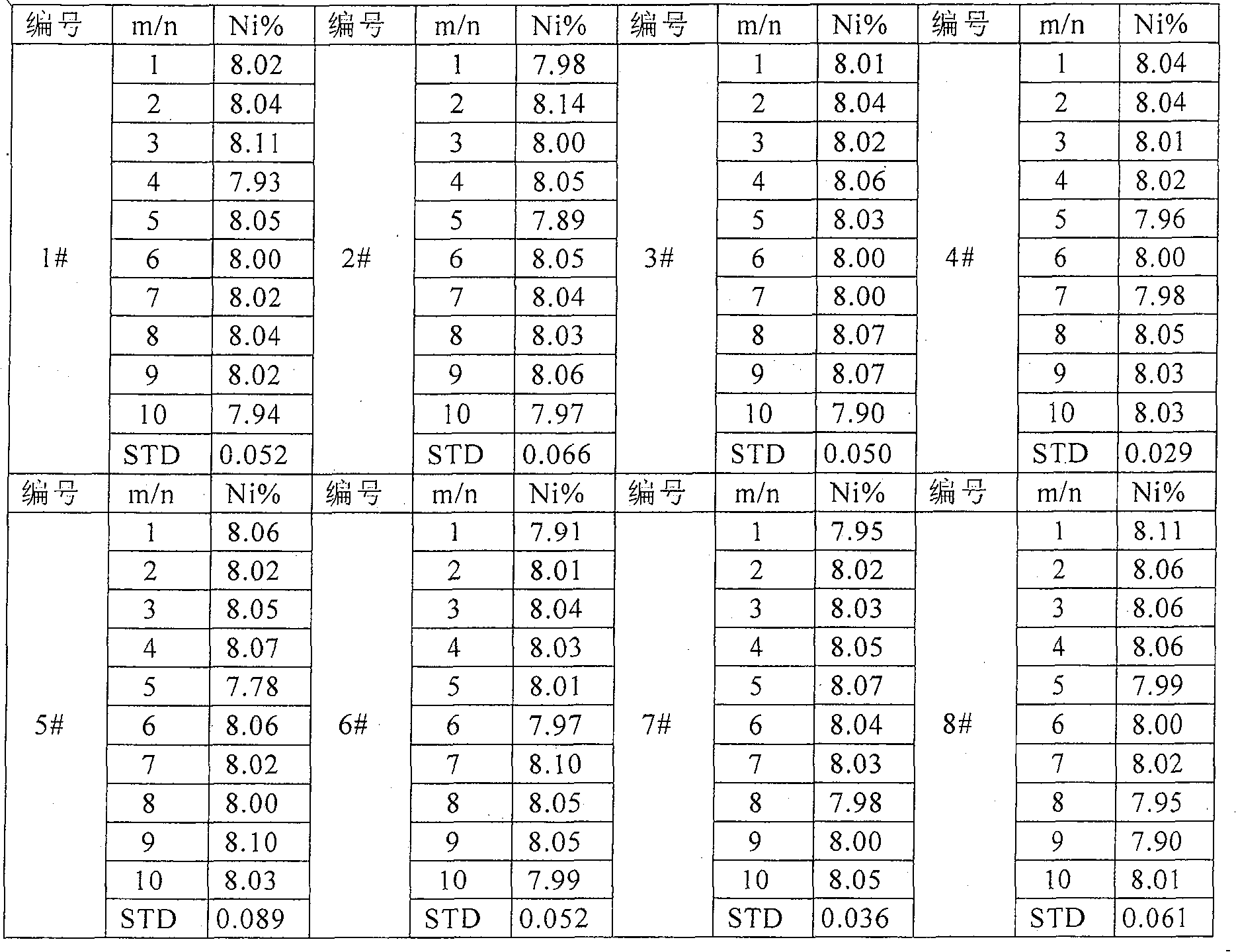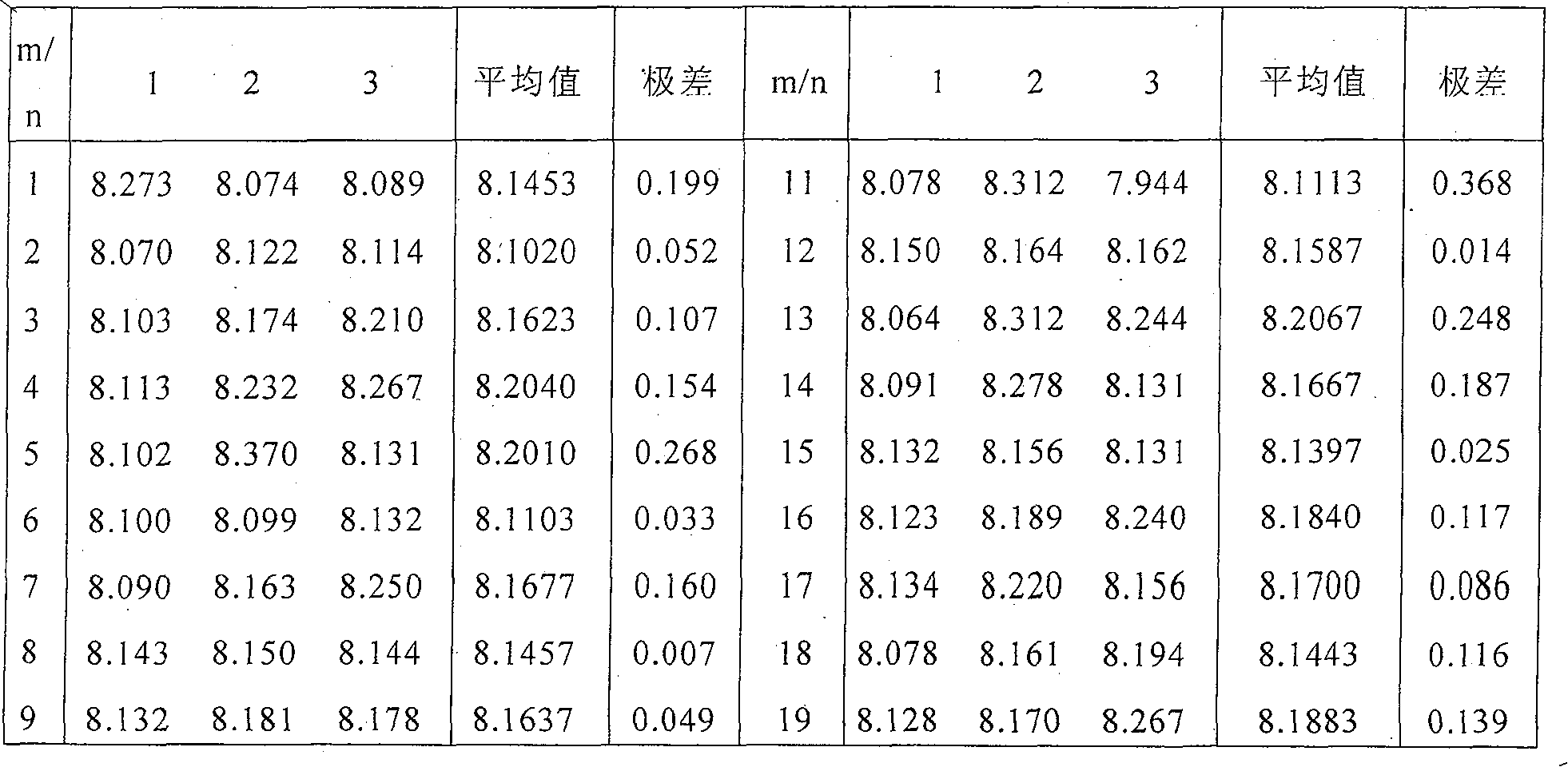Production method of high-homogeneity chromium-nickel austenite stainless steel optical spectrum calibration example
A technology for austenitic stainless steel and calibration samples, which is applied in the direction of material analysis, measuring devices, instruments, etc. by optical means, can solve the problems of coarse and uneven grains, unclear targets, irregular sizes, etc., and reduce the cost of expensive metals. Consumption, huge economic benefits, uniform and consistent results
- Summary
- Abstract
- Description
- Claims
- Application Information
AI Technical Summary
Problems solved by technology
Method used
Image
Examples
Embodiment 1
[0055] The high-quality continuous casting slab of the corresponding steel type is selected as the masterbatch, and it is smelted in a 1000Kg intermediate frequency furnace to ensure the uniformity of the chemical composition, and the composition is fine-tuned according to the requirements of the calibration sample.
[0056] Pouring into a φ360mm / 300mm round ingot, after cutting off the head (25-30%) and tail (15-20%) of the ingot, peeling treatment, tissue defects such as loose head and tail must be removed.
[0057] Ingot forging: select the opening forging temperature of 1100°C to 1150°C, and the final forging temperature of 900°C to 950°C; ensure that the internal and external temperatures of the steel ingot are consistent, and strictly control the temperature for rapid, multi-directional (six sides) uniform forging; repeated upsetting Pull out and forge into a billet of 76mm×76mm×100mm in four times.
[0058] Billet rolling: Select the starting rolling temperature of 1100...
PUM
 Login to View More
Login to View More Abstract
Description
Claims
Application Information
 Login to View More
Login to View More - R&D
- Intellectual Property
- Life Sciences
- Materials
- Tech Scout
- Unparalleled Data Quality
- Higher Quality Content
- 60% Fewer Hallucinations
Browse by: Latest US Patents, China's latest patents, Technical Efficacy Thesaurus, Application Domain, Technology Topic, Popular Technical Reports.
© 2025 PatSnap. All rights reserved.Legal|Privacy policy|Modern Slavery Act Transparency Statement|Sitemap|About US| Contact US: help@patsnap.com



